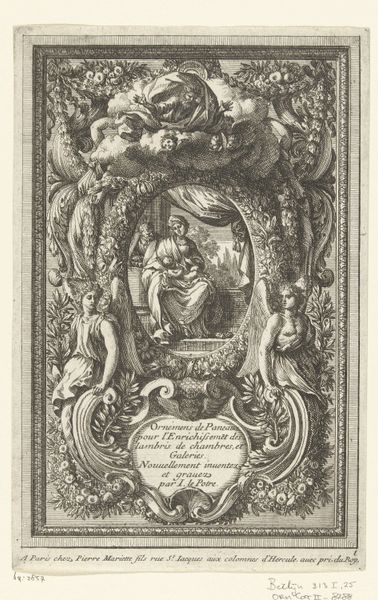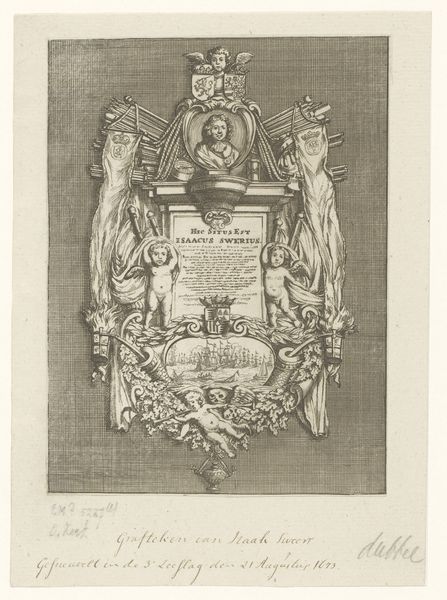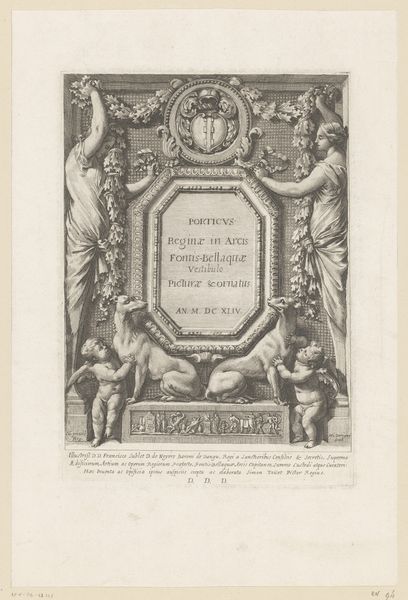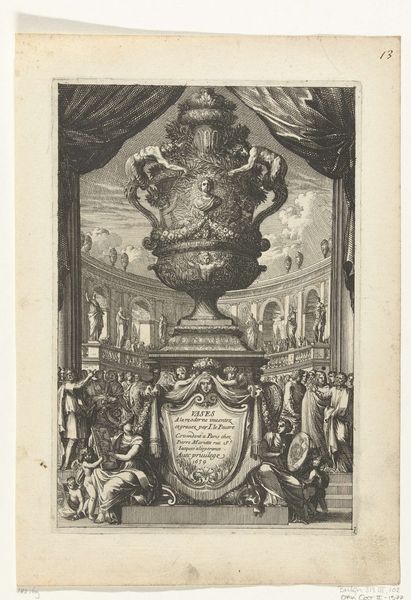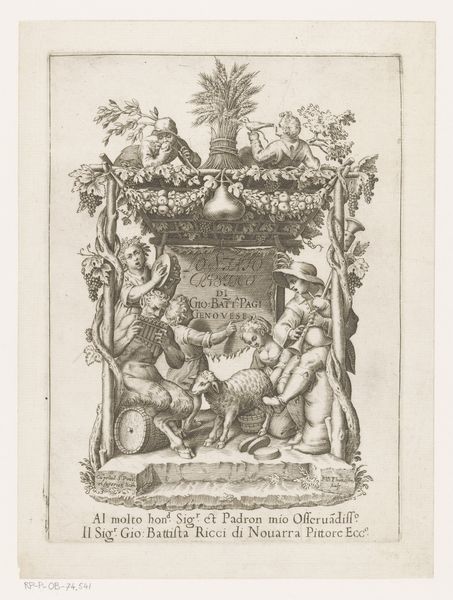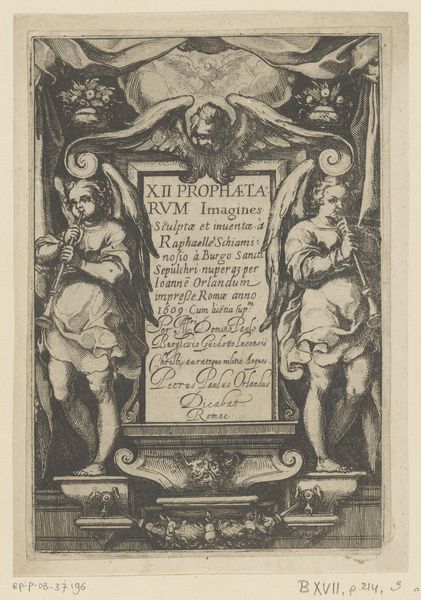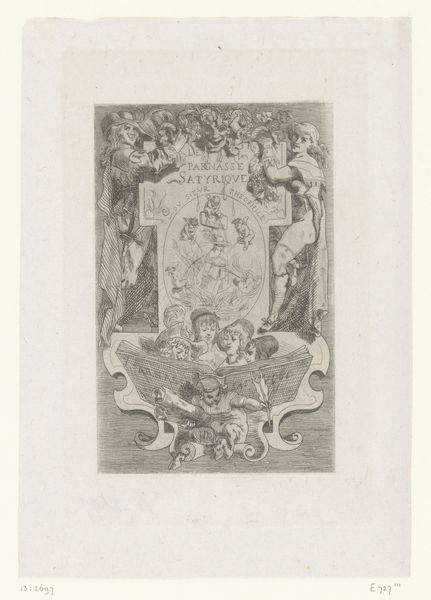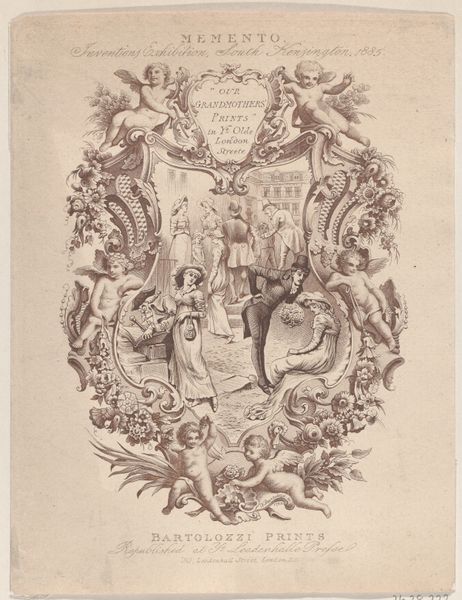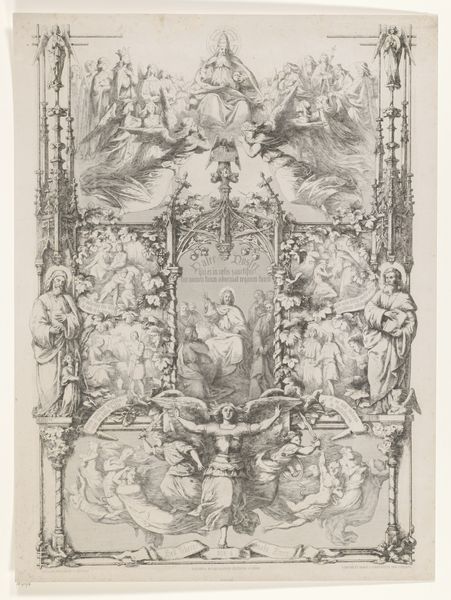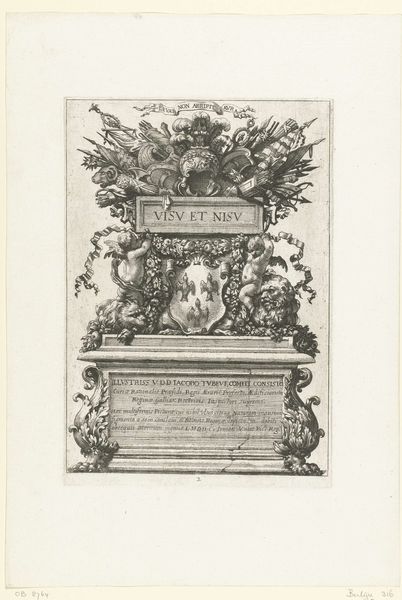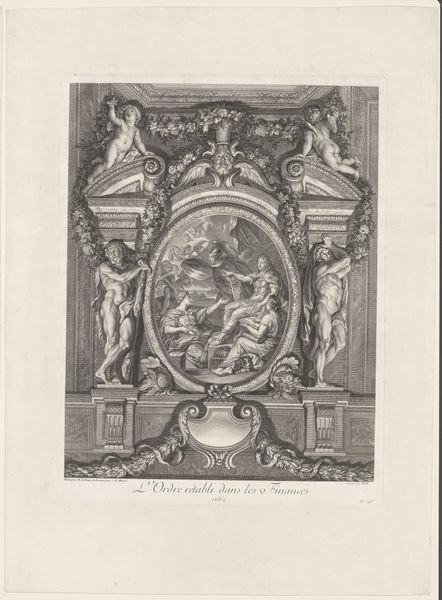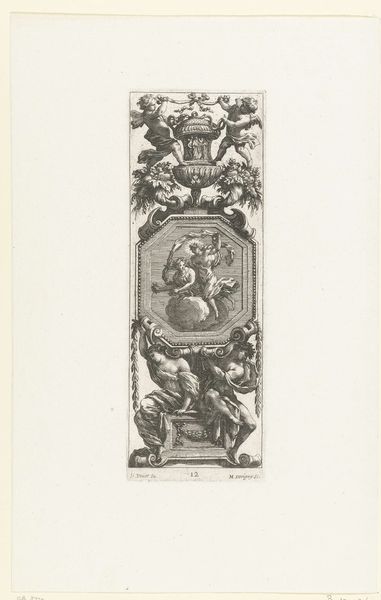
Leopoldo Magno, Caesar I, from Triumphus Novem Saeculorum Imperii Romano Germanici Leopoldo Magno c. 1700
0:00
0:00
drawing, print, paper, engraving
#
portrait
#
drawing
#
baroque
# print
#
paper
#
history-painting
#
graphite
#
engraving
Dimensions: 339 × 234 mm (plate); 401 × 296 mm (sheet)
Copyright: Public Domain
Editor: This print, "Leopoldo Magno, Caesar I," was created around 1700 by Christoph Elias Heiss. It’s an engraving, full of detail. The portrait is surrounded by incredibly ornate decorations. What strikes me is how carefully constructed every element is. What’s your read on it? Curator: I am drawn to the relationship between labor, the materiality of the engraving process, and the glorification of power represented by Leopold. The print medium itself – how it democratizes imagery, creating reproducible propaganda, is fascinating here. Notice how the ornate frame, the text, and even the lion beneath the portrait are all products of skilled craft, ultimately serving the image-making and myth-making surrounding Leopold’s reign. What does the deliberate choice of this medium, compared to painting, suggest about Heiss's intentions? Editor: That’s a good point! Perhaps he wanted to ensure wider circulation of Leopold's image. So, you’re suggesting the very *process* of making the image is part of the statement itself? It’s not just *what* it depicts, but *how* it was produced? Curator: Exactly. The physical act of engraving, the skill involved, the multiplication of the image—all contribute to Leopold’s image, circulating and reinforcing the idea of his power. Think of the consumption of these images, reproduced and spread throughout society. It bridges 'high' art and functional political communication. It is manufactured glory. Editor: So, it's not just about the aesthetic quality but also the social implications of how it was made and consumed? The act of creating multiples turns art into a type of manufactured propaganda of sorts. Curator: Precisely. This allows us to reconsider these objects as crucial elements in understanding early modern power dynamics. A fresh perspective! Editor: That really shifts how I look at prints like this. I won't only focus on composition but rather on production, medium and access.
Comments
No comments
Be the first to comment and join the conversation on the ultimate creative platform.
